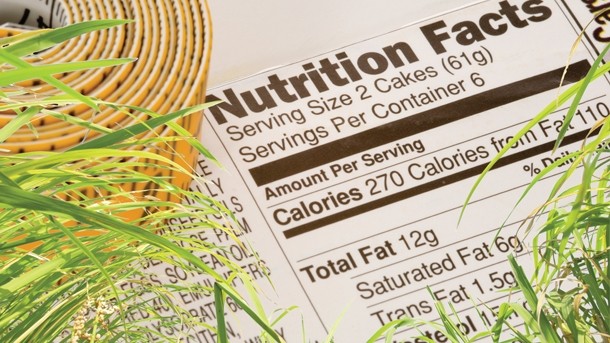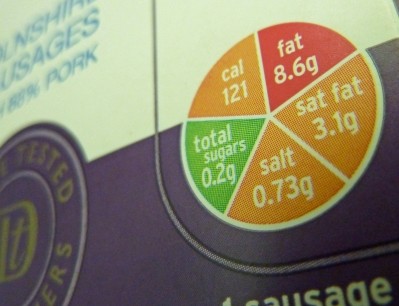Where is the EU's nutrient profiling model?

In the time it has taken the European Commission (EC) to fail to come up with an acceptable system of nutrient profiling for foods as part of the Nutrition and Health Claims Regulation (NHCR), the entire genome of several species has been mapped, the Higgs boson particle detected and the Curiosity rover landed successfully and put through its paces on Mars. In theory, that could change over the next few months.
The NHCR’s long-awaited nutrient profile model was scheduled for completion before 2009. Rather than experiencing anything as eye-catching as a kick into the long grass, it was left for the long grass to grow up and around it.
There is broad consensus that the intention behind nutrient profiles is a laudable one. As the Department of Health (DH) explains, this is to ensure that nutrition or health claims are not used to mislead consumers into thinking that foods are healthier than they really are, if they also have high levels of sugar, salt or saturated fat.
Health spokesman at the EC Frédéric Vincent says: “The issue will probably be on the agenda of the next commissioner in charge of this file. It will be up to them to decide on when, how and – if this – file will be tackled in the next mandate up to 2019.”
Though the EC’s tone might not suggest it, there is a certain urgency about all of this. Chief policy advisor at Which? Sue Davies says: “We have not seen new proposals on nutrient profiles and this is disappointing, as they are an important part of the health claims legislation.
“Although claims now have to be independently substantiated, health claims can still be made on foods that are high in fat, sugar or salt. We need nutrient profiles to help prevent this.”
At Oxford University’s Department of Population Health, Mike Rayner has been contributing to this debate for several years. But, he makes a different point: “Nutrient profiles are already in the health claims legislation. So in theory, by not introducing them, the EC is breaking its own law.”
In the UK, the DH says it supports the concept of nutrient profiles, but underlines the fact that they should be evidence-based. Scientific challenges include the relative difficulty of establishing a causal link between specific foods (as opposed to broader diets) and given health outcomes.
Healthy or unhealthy? (Return to top)
In the past, critics have sometimes maintained that it is only possible to talk about healthy diets, as opposed to healthy foods.
The arbitrariness of thresholds was also a problem for some of those contributing to the debate in 2008.
Diana Axby, regulatory affairs manager at the Provision Trade Federation (PTF), argues: “A nutrient profiling approach to classifying foods as ‘healthy’ or ‘unhealthy’ is inappropriate, particularly if – for convenience – this is based on a very narrow range of nutrients.”
From a scientific perspective, categorising or ranking foods according to their nutrient composition is no easy task.
Judy Buttriss, director general of the British Nutrition Foundation (BNF), explains: “Some foods have multiple characteristics which can't easily be shoehorned into a single measure.
“For example, balancing the importance of cheese as a source of calcium and other micronutrients against its saturated fat and salt content, especially when it might be consumed in small amounts, yet judged on a per-100g basis.”
But many of the academics, consumer groups and other non-governmental organisations pressing for nutrient profiles suspect that the challenges are more to do with politics than science.
“It all depends on the EC and whether it is keen to pursue the issue,” says Rayner. He agrees that, to a great extent, this will hinge on the inclinations of the new commissioner. “But you also need people in the Directorate General for Health and Consumers (DG Sanco) to champion nutrient profiles and push them forward.” He questions whether those in the upper echelons of the unit handling this project attach any real value to nutrient profiles at all.
These being EU issues, the politics operates on more than one level. In part, the failure to establish a nutrient profile model six years ago was about the European Food Safety Authority (EFSA) leaving the EC in the lurch, says Rayner: “The EFSA claimed it was a risk management rather than a risk assessment issue, so they did not give DG Sanco much to go on. They left the EC with only rather vague advice, no expertise and all sorts of political shenanigans to cope with.”
In this case, the politics was at Member State level, with leaders including the former president of France Nicolas Sarkozy and the chancellor of Germany Angela Merkel weighing in on behalf of their respective national food industries.
Profiling obstacles (Return to top)
National differences of another sort have created further obstacles to EU-wide nutrient profiling. As Buttriss points out, there is broad agreement on the nutrient composition of a healthy diet. “But the ways of achieving this are myriad,” she says.
“Key decisions need to be made, such as whether to base the model on composition per 100g, which can penalise foods eaten in small amounts, on typical portion size, which may vary from country to country (with olive oil or cured meats, for example), or on energy density (kcal/g), and then on whether to do this by category or across the board.”
How high you make manufacturers jump in order to qualify for a claim is another sticking point, as Davies adds: “There were previously disagreements about how strict the profiles should be. Given the problems with obesity and diet-related diseases, we think there needs to be strict profiles.”
Rayner says good nutrient profile models are based on dietary recommendations. And any would take into account the growing perception that sugar is more of a problem now than in the past.
In the UK, this has been highlighted by the recent Scientific Advisory Committee on Nutrition (SACN) report on carbohydrates and health. The SACN report called for added sugar consumption in people's diets to be halved.
But perceptions can shift in both directions. The PTF’s Axby adds: “There could be objections to the inclusion of saturated fat as one of the criteria, given recent discussions on this subject. Also, it’s possible that different – or lower – thresholds might be proposed for sugar.”
In fact, as Rayner notes, EFSA’s own guidance on sugar and the other key macronutrients has not changed.
“The EC has two options in establishing a model,” says Rayner. “It could start where it left off. But the last model it came up with was pretty weak and, from a public health perspective, you need [the thresholds] to be reasonably strict.”
He says a second option would be to apply a model from elsewhere in the world and cites the Australasian and French SAIN,LIM nutrient profiling systems as examples.
As Buttriss points out, the various strategies followed by these systems – including the UK’s Ofcom system of policing advertising for children – have different purposes. “Some include both positive and negative food attributes, such as Ofcom and SAIN,LIM,” she says. “Others just focus on the attributes for which excess intake needs to be curbed, such as the UK’s ‘front-of-pack’ labelling approach.”
















